Preparing for Success: Back to School Tips for Grantees
It’s back to school season and parents across the country are getting prepared, buying school supplies, going clothes shopping, and getting their kids ready for another year of academic success.
Back to school also marks the approach of the new grant year. It's time to get a head start and gear up for another impactful season supporting successful grant submissions and wins. A few organizational changes and updated practices can ensure smooth operations and maximize federal funding request efficiency.
Grantees can enhance the effectiveness of their programs by following three simple tips: creating a robust grant calendar, organizing internal grant files and organizational documents, and aligning their goals with funding priorities.
Let’s look at each of these tips more closely.
Grant Calendar: Keep Track of Key Dates and Deadlines
A grant calendar serves as a roadmap, outlining important deadlines, reporting dates, and milestones throughout the funding period. Your grant calendar keeps you on track and focused on the milestones and dates that matter.
Here are some helpful steps to create a comprehensive grant calendar:
Identify key dates. Start by noting deadlines for grant submissions, current funding and reporting obligations, and forecasted opportunities.
Visit local, state, and federal grant portals and websites. Create a calendar with forecasted opportunities by quarter and revisit monthly to update as needed.
Regularly review and update the grant calendar. Be sure to reflect any changes in deadlines or priorities, ensuring that everyone stays informed and on track.
Allocate tasks and responsibilities. Assign tasks to team members responsible for specific funding needs, agencies, or portfolios to stay abreast on upcoming funding programs or initiatives. Report on progress regularly to leadership and development departments.
Organize Internal Grant Files and Organizational Documents
Efficient management of grant-related documents can save a lot of time and energy when the time comes for submitting grants. Create a master grant file containing the standardized forms, organizational documents, templates, and past performances and capabilities available for each grant application. This will support efficient grant submissions and transfer of knowledge when there are personnel changes.
Consider the following tips for organizing internal grant files:
Centralized Storage. Use a secure, centralized digital platform or filing system to store all grant-related documents, including applications, award letters, budget templates, and other standardized documents needed for grant applications.
Folders and Templates. Organize common forms and files that are often needed when submitting grant applications, including:
Budget forms such as an indirect cost rate if your organization has one and justification narrative outline explaining each internal budget item.
Personnel information like organizational charts, resumes of key personnel, and Board members.
Background documents like the organization’s mission, history, and nonprofit status.
Previous experience in managing grants such as oversight of federal funds processes and organizational compliance practices.
Training and certifications of staff and onboarding processes.
Letters of support or commitment from collaborators, partners, or stakeholders that may be repurposed or include the contacts for future requests.
Certifications and assurance forms that ensure compliance with legal and regulatory requirements, such as non-discrimination policies, environmental compliance, lobbying restrictions, and financial accountability.
It's essential to carefully review the specific requirements outlined in the grant application guidelines provided by the funding agency. Adhering to these requirements and ensuring that all necessary forms and files are completed accurately and submitted on time will increase the chances of a successful grant application.
Align Organizational Goals with Grant-making Agencies
At least annually, it is helpful to explore the different federal agencies and their funding priorities. Generally, grant cycles are one year, three years, or five years, and keeping track of administrative changes or legislation that impacts grant programs helps incorporate into organizational strategic planning and activities. Here are some tips to keep up with federal grant funding opportunities and planning:
Take a deep dive into agency priorities and legislation on topics your organization serves by researching the mission, goals, and current priorities of the funding agency and finding the nexuses that align with yours.
Examine your strategic plan and partnerships to form strategic partnerships with other organizations, institutions, or stakeholders that complement and enhance your organization’s alignment with the funding agency goals and trends. For example, if agencies are funding more data-driven programs, make sure you have strong research partners and enhance your evaluation capacity.
Explore your organization's strategic plan to find how to customize your fit within the framework and expectations of the funding agencies you are targeting.
Identify your short and long-term vision, needs, and desired impacts to help develop action items that will support aligning with the current and forecasted funding available.
By sharpening your strategies, you can effectively align your organizational goals with those of funding grant-making agencies, maximizing your chances of securing funding and making a significant impact in your field.
Pave Your Path to Grant Funding Success
As grantees prepare to embark on their grant application and funding journeys, getting organized and planning early can help maintain good grant habits to alleviate some of the pressure when it is time to submit proposals.
These strategies can also support maximizing the number of proposals your organization can apply for without overextending staff and programs. By creating a clear grant calendar, organizing internal documents effectively, and aligning organizational goals with funding priorities, grantees can enhance their efficiency and the quality of the applications themselves.
Consider these recommendations to be your back-to-school homework during slower periods to stay organized and support a healthy grants culture.
Photo by Kelly Sikkema on Unsplash

